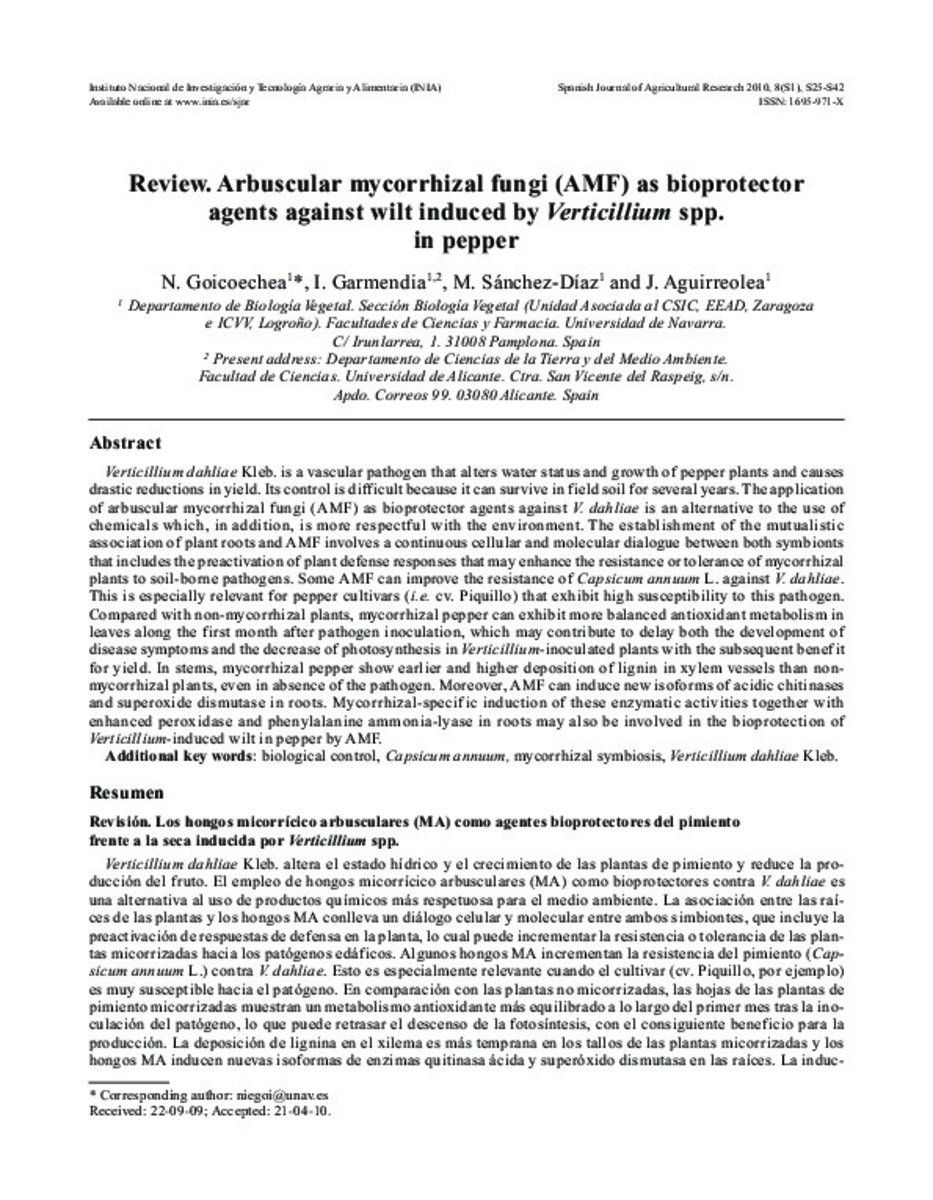Arbuscular mycorrhizal fungi (AMF) as bioprotector agents against wilt induced by Verticillium spp. in pepper.
Keywords:
Biological control
Capsicum annuum
Mycorrhizal symbiosis
Verticillium dahliae Kleb
Citation:
Goicoechea N, Garmendia I, Sanchez-Diaz M, Aguirreola J. Arbuscular mycorrhizal fungi (AMF) as bioprotector agents against wilt induced by Verticillium spp. in pepper. Span J Agr Res 2010(1):25-42.
Statistics and impact
0 citas en

0 citas en

Items in Dadun are protected by copyright, with all rights reserved, unless otherwise indicated.











